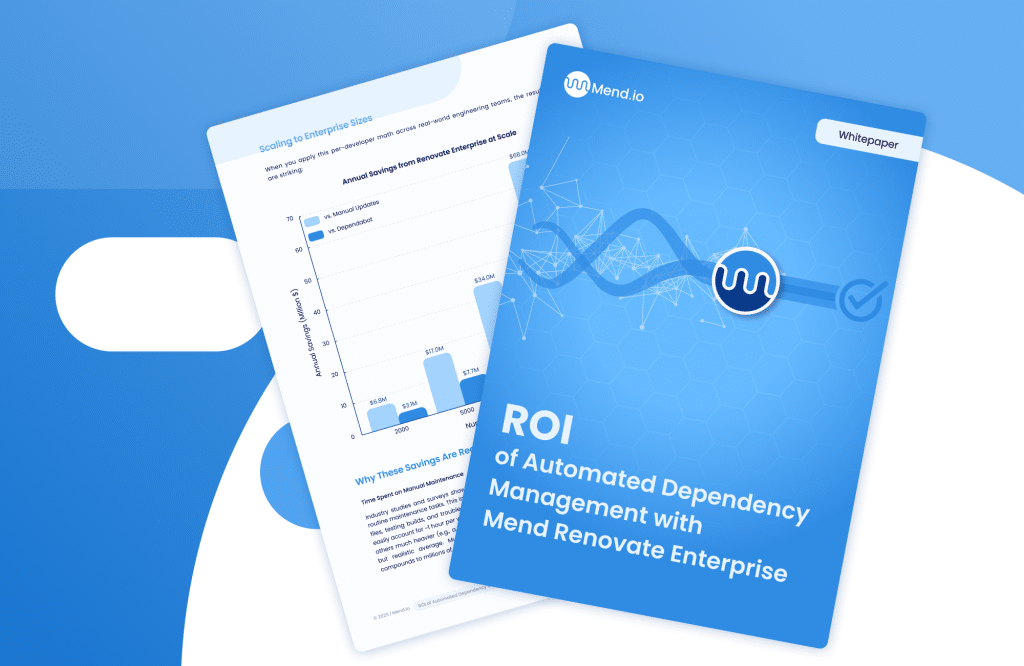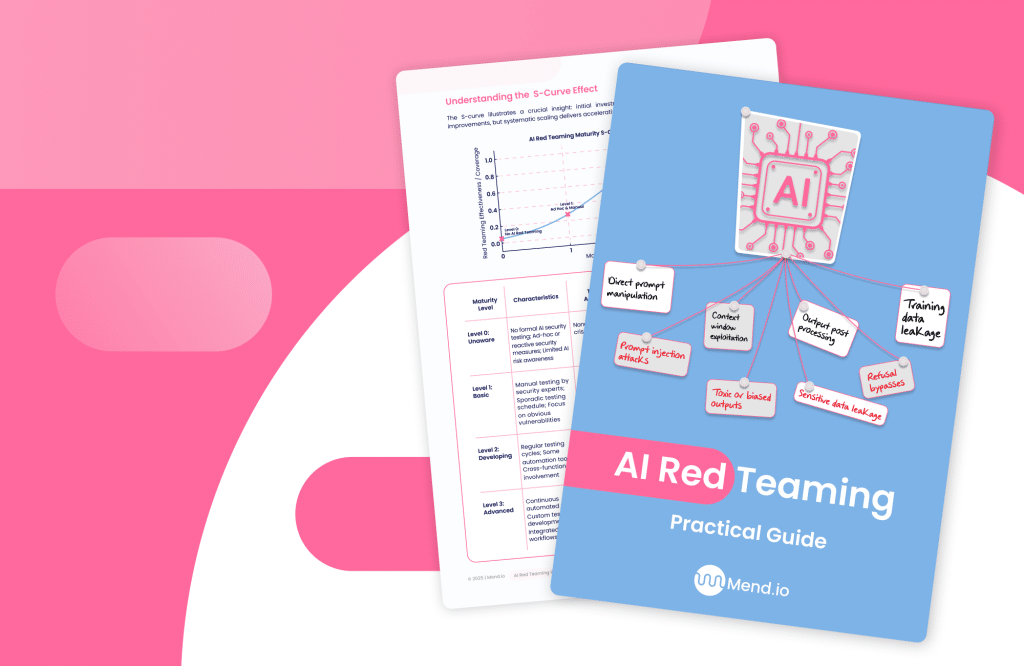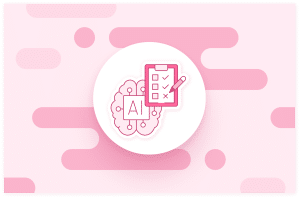Table of contents
Best AI Red Teaming Tools: Top 7 Solutions in 2025

Why AI red teaming tools matter
There was a time when “AI red teaming” sounded like a novelty. Now, it’s fast becoming table stakes. If your organization is shipping machine learning or LLM-powered systems into the real world (especially in sensitive domains), you need to know how those systems behave under pressure. That’s where AI red teaming tools come in.
These tools help teams stress-test AI the way it will actually be used (and misused). They zero in on a more practical question: what could go wrong, and how badly? The goal is to uncover failure modes under real-world conditions, before those weaknesses show up in production or get exploited.
In this piece, we’ll walk through:
- The different types of AI red teaming tools
- What to look for when choosing one
- A few standout tools worth knowing
- How Mend.io fits into the picture
- How to think about fit and readiness inside your org
If you’re already experimenting with AI red teaming tools, great. If not, it might be time to start. This article is part of a series of articles about AI red teaming.
Types of AI red teaming tools
There’s no standard-issue red teaming tool. Some are automated, integrated with your CI/CD and provide continuous monitoring, while others are build to support one time audits by security engineers. What matters is how you use them … and whether they actually help you understand where the biggest risks come from in your AI systems.
Here’s a breakdown of the usual suspects:
Automated tools
These are the ones built for scale. They run hundreds of test cases continuously, looking for specific issues like prompt injection, data exfiltration, or context leakage.
- Useful for production pipelines, compliance testing, or regression checks
- Most come with dashboards, logging, and pre-defined attack templates
- Capable of surfacing issues quickly, especially after updates or fine-tuning
Open-source frameworks
Want to build your own red teaming stack? Open-source tools are a solid place to start.
- Includes frameworks like PyRIT, Woodpecker, DeepTeam and others
- Highly customizable, often modular
- Requires hands-on setup and tuning by teams with ML or security engineering experience
They offer a strong foundation for building tailored red team workflows.
Tools assisting manual red teaming
This is where the humans earn their keep. Skilled red teamers use tooling to move faster, with creativity, context, and persistence driving most of the value.
- Effective for testing fine-tuned or proprietary models
- Helps uncover edge cases and chained attack paths
- Often used in high-stakes domains like healthcare or finance
These teams might use scripting frameworks, prompt runners, or homegrown fuzzers to probe deeper and simulate more realistic misuse.
Key features to look for
AI red teaming tools come in all shapes and sizes. Some are purpose-built platforms with rich integrations and dashboards. Others are more lightweight or modular, designed to support specific testing workflows. The format matters less than whether the tool actually helps your team uncover meaningful failure modes and improve model resilience.
Here are the capabilities worth paying attention to:
- LLM-Specific Attack Simulation
Red teaming has been around for many years, but if you’re testing language models, then you need tools that were designed to test AI systems. These tools should support AI specific issues like jailbreaks, hallucinations, training data leakage, and biased completions. Bonus points if you can create your own test cases based on your AI system and run them in batches. - Support for Fine-Tuned or Proprietary Models
A lot of tools work great on GPT-4. Fewer are built to test that quirky internal model you’ve fine-tuned on customer data. If you own the model weights, you should be able to red team them. - Scalability
Can the tool run thousands of test cases without falling over? Can you schedule re-tests? Can you track failures over time? - Workflow Integration
Look for CLI access, API endpoints, and the ability to plug into CI/CD without duct tape. If it only works from a GUI, it’s going to collect dust. - Usability and Reporting
The output should make sense to humans. Bonus if it helps you prioritize issues or surface patterns over time. - Regulatory Mapping
If your org needs to follow frameworks like the NIST AI RMF or EU AI Act, a tool that helps tie test results to those controls can save a lot of time later. - Deployment Options
Some orgs are fine with cloud-hosted. Others need everything inside a VPC. If you work with regulated data, make sure the tool fits your data boundaries.
Plenty of tools check a few of these boxes. Very few check them all. The key is knowing what your team actually needs, while avoiding anything that slows you down without helping you see more clearly.
AI red teaming is the practical counterpart to the OWASP Top 10 for LLM Applications, and a strong complement to AI penetration testing. While OWASP defines the most critical risks in AI systems, red teaming actively tests for them, exposing real vulnerabilities like prompt injection or data leakage before attackers can exploit them.
Notable AI red teaming tools
While AI red teaming spans a wide spectrum, from automated tools to hands-on consulting services, we’ll focus here on the two main categories: (1) Automated tools available via SaaS tools. (2) Open-source frameworks that teams can run and adapt themselves.
In this article, we highlight 7 leading tools: 5 commercial and automated tools and 3 open-source projects that support do-it-yourself testing and integration. Each offers built-in support for LLM-specific risks like jailbreaks, prompt injection, and data leakage and customized testing at some level.
We’re intentionally not covering manual service providers or consulting-led offerings tools that require external red teamers or professional services to operate. For those interested in deeper or custom adversarial assessments, see our separate guide on AI red teaming services and AI red teaming providers.
There’s a growing list of AI red teaming companies. Some come from major vendors, others are open-source, while still others are startup-built (and evolving fast). Here are a few worth knowing, whether you’re just getting started or expanding a mature red teaming program:
1: Mend.io
Securing AI powered application end to end.
Mend AI is one of 5 products in the Mend AppSec platform and it offers several solutions to secure AI applications. Mend AI integrates directly into developer workflows to identify all AI components in your code (AI models, agents, RAGs, MCPs etc.) and assess the risk of these components (security and compliance risks), and it also applies policies based on your companies definitions. Another solution it offers is an automated and continuous AI red teaming solution to analyze how your AI systems work in real life scenarios and also offer system prompt hardening to remediate issues detected in your AI red teaming tests.
Ideal for:
- Engineering teams looking for an automated and continuous solution for conversational models
- Teams who are looking to use pre-defined tests for coverage and also customized tests for specific AI issues
- Environments where compliance and secure coding practices matter
Key Features:
- More than 22 pre-defined tests to cover all main AI specific risks
- Ability to customize your own tests based on the role of your AI system
- Behavioral analytics to track how models respond over time
- Able to detect and harden system prompts to mitigate risks discovered by red teaming
- Bridges the gap between red team discoveries and AppSec daily tracking
2: HiddenLayer – AutoRTAI

Automated, agent-based red teaming at scale.
AutoRTAI is an automated AI red teaming platform from HiddenLayer, designed to simulate adversarial attacks against AI models and generate structured, repeatable insights. Its agent-based architecture makes it suitable for scaling tests across diverse systems, including LLMs and ML classifiers.
Ideal for:
- Security and risk teams testing AI deployments
- Teams seeking repeatable, automated red teaming without building internal frameworks
- Organizations with compliance needs around AI system monitoring
Key Features:
- Simulates sophisticated adversarial behavior, including chained and layered attacks
- Behavioral analytics to track how models respond to edge-case queries and stress scenarios
- Enterprise-grade reporting and dashboards to support risk analysis and audits
- Focused on black-box and gray-box testing methodologies
3: Mindgard – DAST-AI

Bringing dynamic testing to AI pipelines.
Mindgard’s DAST-AI tool adapts traditional Dynamic Application Security Testing to AI systems, focusing on how models behave when manipulated in production-like environments. It’s particularly strong in surfacing real-world misuse patterns, such as hallucinations or malicious output triggers.
Ideal for:
- Security teams testing AI-integrated services and pipelines
- Companies using LLMs in user-facing interfaces, decision engines, or automation
- Teams wanting to simulate misuse rather than theoretical attack paths
Key Features:
- Covers hallucinations, injection attacks, output manipulation, and behavioral drift
- Works across model layers including data preprocessing, inference, and post-processing
- Built for repeatability and integration with operational environments
- Allows fine-grained control over test vectors and outputs
4: Protect AI – RECON

Get your asset inventory in order, then layer on detection.
RECON from Protect AI offers foundational visibility into your AI landscape. It identifies the assets you’ve deployed (models, endpoints, and datasets), maps their exposure, and aligns that intelligence with known risks and compliance frameworks. It’s often a precursor (or complement) to red teaming work.
Ideal for:
- Organizations building out AI governance or security posture management
- Teams that lack visibility into where AI models are deployed and how they’re exposed
- Compliance-conscious environments aligning with frameworks like NIST AI RMF or EU AI Act
Key Features:
- Discovery and cataloging of models and associated assets
- Threat detection and exposure scoring across the model lifecycle
- Reporting aligned to compliance frameworks and security audits
- Often paired with other red teaming tools to contextualize and prioritize risks
5: PyRIT (Python Risk Identification Toolkit)

Scriptable, modular red teaming from Microsoft.
PyRIT is Microsoft’s open-source framework built for hands-on red teamers who want control over how attacks are simulated. It’s especially useful for testing proprietary or fine-tuned models, offering flexibility through modular components and scripting.
Ideal for:
- In-house red teams or security researchers with LLM internals access
- Teams looking to customize test coverage for specific models or use cases
- Organizations fine-tuning open models and wanting to stress-test before release
Key Features:
- Modular architecture supporting plug-and-play attack components
- Built-in support for prompt injection, jailbreak testing, and other LLM-specific risks
- Fully scriptable and extensible for custom workflows and automation
- Actively maintained with contributions from Microsoft’s security team
6: Woodpecker

Battle-tested for AI, API, and infrastructure red teaming.
Woodpecker is an open-source automated red-teaming engine purpose-built for security teams working with AI systems, Kubernetes environments, and APIs. It simulates real-world adversarial tactics like prompt injection, model exfiltration, data leakage, and misconfigured access controls—bringing red teaming beyond just the model to the full deployment stack.
Ideal for:
- Security teams managing LLM or AI agent deployments
- DevSecOps or platform teams using Kubernetes and API gateways
- Organizations needing continuous, automated AI attack simulation
Key Features:
- Simulates prompt injection, jailbreaks, model theft, and API abuse
- Covers key OWASP threats (Top 10 for APIs, LLMs, and Kubernetes)
- Agent-based modular design for plug-and-play attack modules
- Works across cloud-native stacks with CI/CD integration
- Designed for reproducibility, scaling, and integration with existing SIEM/SOAR tooling
7: DeepTeam

Purpose-built for uncovering and stress-testing LLM weaknesses.
DeepTeam is an open-source, modular AI red-teaming framework designed specifically for identifying and mitigating vulnerabilities in large language models (LLMs). Developed by Confident AI, it simulates over 40 attack types—from prompt injection to PII leakage and jailbreaks—while offering optional guardrails for prevention. DeepTeam is engineered for teams who need precise, reproducible insights into LLM security flaws.
Ideal for:
- Teams experimenting with prompt-level robustness and safety
- Researchers probing alignment, jailbreak potential, or tone manipulation
- Lightweight deployments or integration with larger red team stacks
Key Features:
- Includes prebuilt attack modules targeting jailbreaks, toxicity, leakage, and bias
- Designed to be composable and easily scripted for batch testing
- Surfaces model behavior shifts and alignment drift over time
- Low setup overhead—usable with both public and private LLMs
Choosing the right tool for your team
Choosing the right tool starts with understanding your environment. What kind of AI are you deploying? Where are the biggest risks hiding? Who’s going to be running the tests, and what will they need to succeed?
Before you start shopping, ask questions like:
- What kinds of models are we using: off-the-shelf LLMs, fine-tuned internal models, or something else?
- What would a real failure look like in our context? Leaked data, toxic output, regulatory blowback?
- Do we need to integrate red teaming into CI/CD, or will it be more occasional and manual?
- Who’s doing the testing: developers, security engineers, or a dedicated red team?
- Are there specific compliance frameworks we need to align with?
- How much customization do we want, and how much time can we afford to spend tuning the tool?
Being honest about your needs helps you avoid overbuying … or picking something that looks powerful but doesn’t match your team’s workflow.
Here’s a quick way to match tools to needs:
| Use Case | Best-fit Tools |
|---|---|
| Automated Saas tools | Mend.io, HiddenLayer, Protect AI, Mindgard, Lakera, Repello |
| Open source projects | PyRIT, DeepTeam, AutRed, Garak, Woodpecker |
| Services-led tools | Crowdstrike, RedBotSecurity, HackerOne, Schellman, Shaip, Nexigen |
A good starting point is to identify your most critical model use cases and pick tools that align with those workflows. If you’re testing a chatbot that handles financial data, for example, look for tools that support prompt manipulation, track output drift, and integrate with your compliance reporting. If you’re building internal red teaming capabilities, focus on flexible, scriptable frameworks your team can grow into.
Whichever path you take, make sure the tool helps you move quickly without obscuring the signals you care about.
What red teaming won’t catch (and where Mend.io comes in)
Even the best red team only finds what it tests for. Simulations can reveal blind spots, but they don’t close them. And in fast-moving environments, vulnerabilities introduced by LLMs often show up in the code they generate, the dependencies they pull in, or the decisions they influence downstream.
That’s where Mend.io can help by:
- Scanning AI-generated code for risky patterns, insecure defaults, and vulnerable libraries
- Flagging issues in real time, before they reach production
- Working directly in developer workflows for faster fixes
Red teaming helps you understand what can go wrong. Mend.io helps you reduce the chances of it happening in the first place. If you’re using AI to build, ship, or support software, you need security that keeps up. Mend.io is built for that reality.
AI red teaming has become a marker of maturity in organizations adopting AI. The teams making the most progress are building it into their regular development and deployment rhythm. They’re investing in offensive simulation, defensive fixes, and better default behaviors across the board.
Whether you’re simulating attacks, addressing the issues that surface, or putting preventative guardrails in place, the aim is steady: help teams move faster without sacrificing visibility, control, or safety.
That’s the real value of a well-rounded AI security program. It gives teams the confidence to build (and keep building) with their eyes open.












